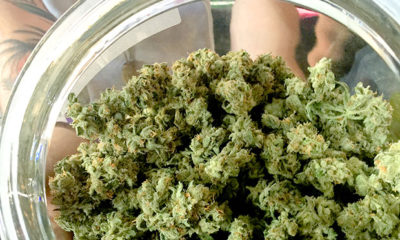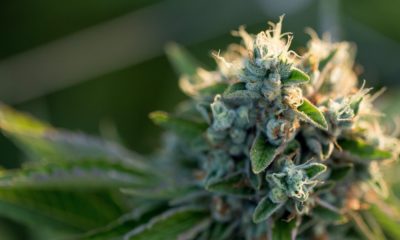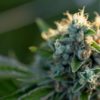
Cannabis
The Science Behind Medical Marijuana & Migraines
The use of cannabis for migraine headaches dates back to ancient times, but we still don’t know exactly how cannabis works to manage headache disorders. New research could change that.
A new review released by the journal “Cannabis and Cannabinoid Research” seeks to discover some of the ways cannabis may provide relief for the thousands of people who suffer from the debilitating effects of migraine headaches.
According to the recent report, about 47 percent of America’s population experiences headaches each year — this includes migraines (10 percent), tension-type headaches (38 percent) and chronic daily headaches (3 percent.)
All of this comes at large societal and individual costs, estimated at $14.4 billion a year. The report also found that women are two to three times more likely to experience migraines than males.
With the caveat that there is currently not enough evidence from scientific trials to support the use of cannabis for a headache, the scientific review does say that there is plenty of anecdotal evidence, preliminary results and “plausible neurobiological mechanisms” to support it.
The study also acknowledges the firm historical basis of cannabis being used as a treatment for headaches.
“Asyrian manuscripts from the second millennium BCE recommended cannabis to ‘bind the temples’ and Ayuvedic preparations in the third and fourth centuries BCE were indicated for ‘diseases of the head’ such as migraines,” the report reads.
The study goes on to list other sources of antiquity that recommend cannabis for headaches: ancient Greek writings, the earliest known documents of Arabic pharmacology, Persian texts from the 10th and 17th centuries and writings from prominent physicians in the Middle Ages.
In addition, cannabis was used as an effective treatment for headaches in America from 1839 until cannabis became illegal in 1937.
“Notable physicians who espoused the benefits of cannabis for headache disorders included John Russell Reynolds, the personal physician for Queen Victoria; American neurologist Silas Weir Mitchell; founder of the New York Neurological Society, Edouard C. Seguin; William Gowers, a founding father of modern neurology and Sir William Osler, often considered the father of modern medicine,” the report reads.
To conduct their research into the historical use of cannabis, the study’s authors looked into data presented by clinical publications from 1839 to 1937, when cannabis became illegal in America. In this time, cannabis was typically prescribed within an alcohol extraction in the range of 16-32 milligram doses.
“Early reports of cannabis for the treatment of headache appear to be largely positive, with many patients experiencing a decrease in the frequency and intensity of their headache episodes,” the report states. “In some cases, headache was cured entirely even after cannabis discontinuation.”
While headaches are extremely complex — it is not even known what area they initiate from in the brain — there are some indications as to how cannabinoids might help to alleviate them. This research starts by discovering some of the underlying causes of headaches, including a predisposition to them for some people because of their genetic makeup.
Cannabis primarily interacts with two type of receptors throughout the body — CB1 and CB2 — and remarkably, studies have shown that an increased expression of the cnr1 gene, which also interacts with the CB1 receptor, is associated with migraines.
“Women who experience migraine also have increase activities of fatty acid amide hydrolase (FAAH), an enzyme used to degrade the endocannabinoid anandamid (AEA) and the endocannabinoid membrane transporter (EMT), a membrane transporter for AEA, leading to an overall decrease in endocannabinoids,” the report reads. “This finding could partially explain the increased prevalence of migraines in women.”
The report goes on to explain that reductions in endocannabinoids, which are cannabinoids produced by our bodies that can be supplemented by cannabis, might actually be the cause of headaches.
Which means supplementing your system with cannabinoids that originate from cannabis makes sense.
“The endocannabinoid deficiency hypothesis provides a possible mechanism underlying not only migraine but also diseases such as fibromyalgia and irritable bowel syndrome,” the study reads.
Cannabis likely works for migraines because of its ability to interrupt certain stages in the development of headaches. While the recent report primarily calls for real clinical trials – virtually impossible to conduct to the cannabis’ status as a Schedule I substance — it also touches upon another hot topic: while there is no clinical information on the potential treatment of migraines with CBD, the cannabinoid has shown results in headache-related conditions such as anxiety.
TELL US, have you used cannabis for headache disorders?



















